SIGN UP FOR NEWSLETTER
Be the First to Know. Sign up to newsletter today

Monika Chauhan
648 views
add comment
Adding to the festive shine, Diwali Mela in each colony certainly make for the most exciting part of Diwali celebrations in Delhi. Each of these fairs is a medley of crafts from across the country, with a number of products on offer. Clothing, jewellery, handicrafts & accessories are some of them. Some of these Melas also host cultural performances in the evenings, making them all-things exciting for one and all.In addition, the mouth watering food in each of the Diwali Melas is a great attraction for everyone.Enjoy Diwali celebrations in India.
If you were to put together the world’s major religious festivals, we bet you still won’t get anywhere near the number of festivals Indians celebrate in a year. Each and every festival hold s a special place in our hearts. They let us feel the warmth and close presence of our elders like our entire culture is there with us. With the brightest festival of Diwali around the corner, Delhi gets set for the festive rush with lights, colours, sweets, ethnic wear, decorations, brighter homes and of course, lots of happiness. Yes, it’s time for the city to host some of the best Diwali fairs in the country. Organizers vie with each other to host the best Diwali Mela in the city.
Take a look at the best Diwali Melas in Delhi 2024
This is by far the most popular Diwali Mela in Delhi. It is held in the Blind school premises at Lal Bahadur Shastri Marg. On display are beautiful home decor items, clothing items, jewellery & accessories. The school grounds are vast and that makes the experience all the more interesting. In addition, the food stalls attract people withmouth watering snacks and authentic choices form several neighbouring States. Stall owners vie to book a stall in this Mela.
Lal Bahadur Shastri Marg, Near Oberoi Hotel
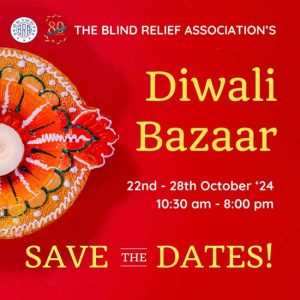
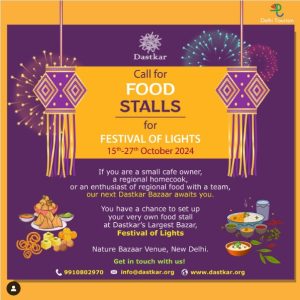
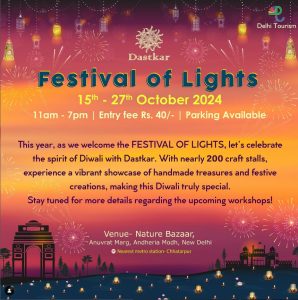
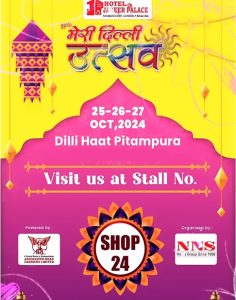

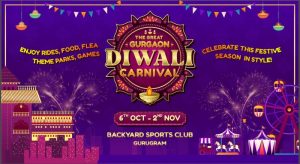
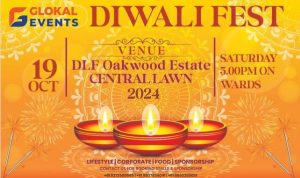
NOIDA DIWALI UTSAV
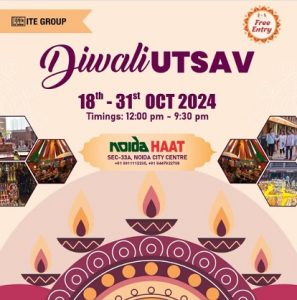


Diwali is also known as ‘Deepavali’, which refers to a row of diyas/lights. The five-day-long festival is not only celebrated all over the country but also by the Indian diaspora across the globe. In fact, some US Presidents have also hosted Diwali parties at the White house in the past.Let’s talk about the festival of lights in detail, the significance of each of these days and the stories behind them. People start Diwali parties months in advance. They play cards as is the custom and enjoy the camaraderie and the rich cuisine.

Dhanteras, is the first day of Diwali festival. Also called Dhanatrayodashi or Dhanvantari Trayodashi, the festival is dedicated to Lord Dhanvantari. This is an auspicious day to buy utensils, silver coins, gold and other metals ,such as brass & copper. People also seek blessings of happiness and prosperity from Lord Kuber, the idol of wealth and money.

The second day of Diwali is celebrated as Naraka Chaturdasi or Choti Diwali or Kali Chaudas. It falls on October 30 this year. Legend has it that demon Narakasura was killed by Lord Shri Krishna on this day (rescuing a total of 16,000 captive princesses). As a traditional practice, devotees get up before sunrise,take a holy bath and wear new clothes to celebrate the day with friends and relatives.They also visit each other’s homes to exchange gifts and sweets.
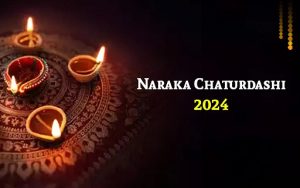
Lakshmi Puja or the third day of Diwali is the most important one among the five days. It falls on 1st November this year. The auspicious day is dedicated to Goddess Lakshmi, the Hindu Goddess of fortune and prosperity.She is worshipped along with Lord Ganesha, the God of auspicious beginnings, on the eve of Diwali.
People light diyas and candles in each and every corner of their house to let it be blessed by Goddess Lakshmi.It is certainly a belief that worshipping Lakshmi will bring peace and prosperity.
It is also believed that Lord Rama rescued his wife Sita from the demon king Ravana on this day. After the end of the epic battle where Rama defeated Ravana, the former headed northwards towards his home in Ayodhya. When he returned to his Kingdom, people had lit up his path with diyas so he could return in the dark. Hence, the day commemorates the triumph of good over the devil.
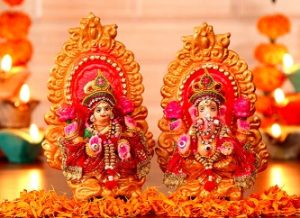
Diwali Decorations

The beauty of Diwali comes from the warm glow of lights decorating homes and shops everywhere in the neighbourhood. The festival also gives an opportunity to create beautiful Rangoli patterns on the floor.It’s time to delve a bit deeper into your childhood days to uncover some beautiful memories. Remember spending the festive evening together with your cousins, parents as well as grandparents in the best of your clothes and moods of course! Well, I had a great time indeed creating a colourful rangoli pattern.
Taking a pinch of colour between my fingers and trying my best to make a replica of the design next to my brother’s. Though my borders were never perfect and the lines shaky, I was really proud of my Rangoli after getting praises from everyone around. I am sure you will be happy to plunge into your beautiful childhood memories by adorning the entrances of your home with the elegant Rangoli designs. This is a great way to involve the family & encourage creativity among everyone.
The fourth day or the day of Govardhan Puja is also celebrated with great pomp and show in the northern States of India. According to a popular legend, Lord Krishna lifted the hill called Govardhan Mountain to shelter villagers from the vindictive Indra. It is a traditional practice to make a small mound, usually of cow dung, and worship it.
In India’s westernmost state of Gujarat, the festival marks the beginning of the new fiscal year. Celebrated on the day after Diwali, Bestu Varas or Gujarati New Year is marked with greta festivities .According to the Hindu lunar calendar, Kartik is the first month of the year and Bestu Varas coincides with the first bright day of Kartik.
On this auspicious day, people in Gujarat beautify their homes with the use of flowers and lights. They also dress up in the best of their traditional attires and visit temples to offer prayers to Gods and Goddesses. A day of great rejoicing filled with the essence of Gujarati culture, the festival includes splendid fireworks too. Moreover, it is a common practice for Gujjus to close their old account books and open new ones on this day.
Further, women prepare delicious sweets and farsan (salty snack) to be distributed among friends and family. Delicacies like Khambat’s suterfeni, Surat’s ghari, kajukatri, sohan papdi, ghugra and kansaar, among others add immense sweetness to the festive fervor.
Finally, the fifth and last day of the festivities is celebrated as Bhai Dooj. It falls on November 3 this year. The festival is equivalent to that of the popular Raksha Bandhan festival. Brothers visit their sisters’ homes on this day for the ‘Tilak’ or ‘Tika’ ceremony. Prepared with rice and vermilion, the Tilak is first applied on brothers’ forehead followed by aarti. Sisters also lovingly prepare sweets for their brothers, wishing them a happy and healthy life.

Diwali is a time to embrace family relationships . It is a time to collectively enjoy good companionship & good food.
Be the First to Know. Sign up to newsletter today